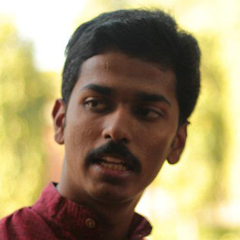Aranmula Kannadi: A mirror reflecting Kerala's traditions and glorious past
Mail This Article
Kottayam: If you are not the touristy kind of traveller and is interested in learning about the culture and art forms of the place being visited, then the small town of Aranmula in Pathanamthitta district of Kerala is a must go.
Interestingly, all the three things famous here begins with the place's name - the Aranmula Parthasarathy Temple, Aranmula Kannadi and Aranmula Vallasadya. Undoubtedly, the temple is the epicentre around which the other two also function.
The Aranmula Kannadi (mirror) manufactured in this temple town is the first item from the state to get a geographical indication (GI) tag.
The mirror is a metal alloy and the method and ingredients of making it is a secret well kept among the artisans here. They say it is a 2,000-year-old technique.

The legend
Rajeev M, an artisan who runs the Manikanda Handicrafts shop, shared with Onmanorama his version of the story of Aranmula Kannadi.
According to him, the artisans belonging to Viswabrahmana caste were brought from Sankarancoil in Tamil Nadu to Aranmula by the king for the construction work at the Aranmula Parthasarathy Temple. Before leaving they gifted the King a crown with a metal mirror at the centre. Impressed by their metallurgical skills, the king proclaimed that they need not go back to Tamil Nadu and arrange for their stay near the Theke nada of the temple. Two families settled, however one later went back when work declined.

It is believed that the secret mix of the alloy was revealed to a woman in the family in a dream. In the early days, the mirror was used mostly by those from the royal families only.
The mirror
The mirror is built from scratch locally by these artisans. There are usually three kinds of mirrors - hand mirror, back stand and fixed stand.
A mould is made according to the specifications of the mirror and a technique similar to the lost wax casting is used to make the mirror. A mould can produce 80 to 100 mirrors. However, making the mould is a laborious task, besides polishing the mirrors could go on for several days to obtain the desired reflective surface. A craftsman may make a maximum of 15 mirrors in a month. It also justifies the high price attributed to the mirrors. The price for a small 2-inch mirror starts at Rs 2,500.

The Aranmula Kannadi is a front surface reflection mirror, which eliminates secondary reflections and aberrations typical of back surface mirrors. As opposed to the image produced in common glass mirrors, the reflection formed in the Aranmula Kannadi does not undergo refraction.
Current scenario
In 2002, the world recognised the craftsmanship of these traditional metallurgist and the GI tag was given to Aranmula Kannadi. The artisans formed a collective, the Vishwabrahmana Aranmula Metal Mirror Nirman Society, to coordinate, collaborate and market their works. Rajeev who has been in the profession since he completed his class 10 said there are 24 units working under the society now.
The artisans here were among the worst-hit by the floods in 2018 as a swollen Pamba river reached their homes and workplaces.

The prime season for these artisans is during Onam festival when thousands throng this place to attend the Aranmula Vallasadya. The Vallasadya is a religious tradition where devotees offer sadya (traditional meal) to the crew of snake boats to please Lord Krishna.
However, the devastating flood situation witnessed by Kerala during the Onam season in both 2018 and 2019 hit these artisans hard as their sales reached its lowest.
“Travellers and other people coming to buy the famed mirror have gone down considerably for all the shops here,” says Aravind S, an Aranmula Kannadi maker at Aishwarya Handicrafts.
The declining flow of income also meant that the younger generation is no longer showing interest in continuing the family traditions.
“It involves long hours of labour with mud and fire, only two out of ten youngsters would show interest in taking this up as a profession,” said Rajeev.
To promote the artwork among its members the society is now organising coaching classes every two years. In its first batch in July this year there were 20 people who attended the classes, out of which 16 were women and 10 of these women have already joined the workforce.

Even though craftsmen from outside the family can be hired for designing and manufacturing the frame and other parts, the central mirror alloy has to be made by a person from the family and with proper prayers for it to be considered auspicious. The makers and most buyers also believe that the mirror manufactured in this manner has a certain positivity to it.


